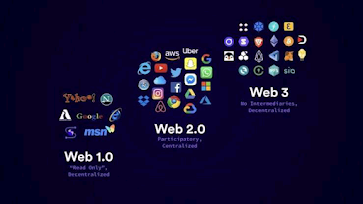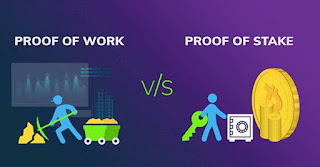What is Web 3.0?
The internet since its inception has evolved and continues to do so, in this article we take a look at the latest but still upcoming version of one of man's greatest inventions, why it is needed, and its potential for the technological world.
Web 3.0 represents the third generation of the World Wide Web and the next phase of the internet. Its current version, Web 2.0 was the successor of its first iteration, Web 1.0.
Web 1.0 was the "read-only" version of the web, users were permitted to access information and read it. Web1 was devoid of the social interaction we can afford on the current version of the internet. We deserved better, the internet evolved, and Web2 came in.
Web 2.0 was the "participative social web" or the "read-write" version of the web. The growing audience and users of the internet saw the need for a version that would emphasize User Generated Content(UGC). A version that could permit users to not only access information but also interact with it, collaborate and have dialogues. Web2 was the version of the internet that would enable social media.
If you're reading this, this is Web 2.0.
The newest iteration of the internet, Web 3.0 could be said to be a fulfilment of Tim Berners-Lee's dream of a "semantic web". This third generation of the internet was the "read-write and execute" version. I can give you no exact definition but Web3 aims at a data-driven, decentralised, participative and connected web.
Why the need for Web3?
Web3 was born out of a need to address Web2 issues.
Web2 combines decentralised data creation with centralised storage, your data from different social media accounts or sites might be stored on one central giant data centre, this makes it a target for hackers. If hackers get into one of those data centres, they can get all your data from those different accounts.
Also, as a result of the centralized data storage that is owned and controlled by humans, there comes an issue of trust. We can't trust these institutions that hold these data because we can't also trust the humans that make them up.
Web2 could not solve its own issues as the underlying cause was from the initial design of the Web2 itself, solving the problems of Web2 on Web2 would be a Sisyphus myth.
Web3, through it's decentralised storage solves the issue of centralised storage of the Web2, and through its trustlessness solves the issue of trust of the Web2.
How will Web3 change the internet?
I'll simplify it, Web3 powered by the Blockchain will allow us to read data, write our own data and own it. We do not have to create data and hand them over to giant tech companies to store for us.
A Blockchain powered Web3 will also remove the need for an intermediary in our online connections and transactions, we can carry out transactions without the need for a financial institution acting as a medium between both parties. We see that today in peer to peer cryptocurrency transactions.
In my subsequent posts we would be diving deep into Web3 technology and what powers it, the blockchain.
Vision of Web3 (1+2=3)
The Web3 aims at combining the decentralised feature of Web1 with the participatory and interactive feature of Web2.
We are yet to harness the full potential of Web3, but surely it promises us a more dynamic and interactive internet. It's a space you would like to keep an eye on.
Welcome to Web3. Welcome to the future.
For more content in Web3 and Crypto, do well to follow me and subscribe.
Cheers.



Comments
Post a Comment